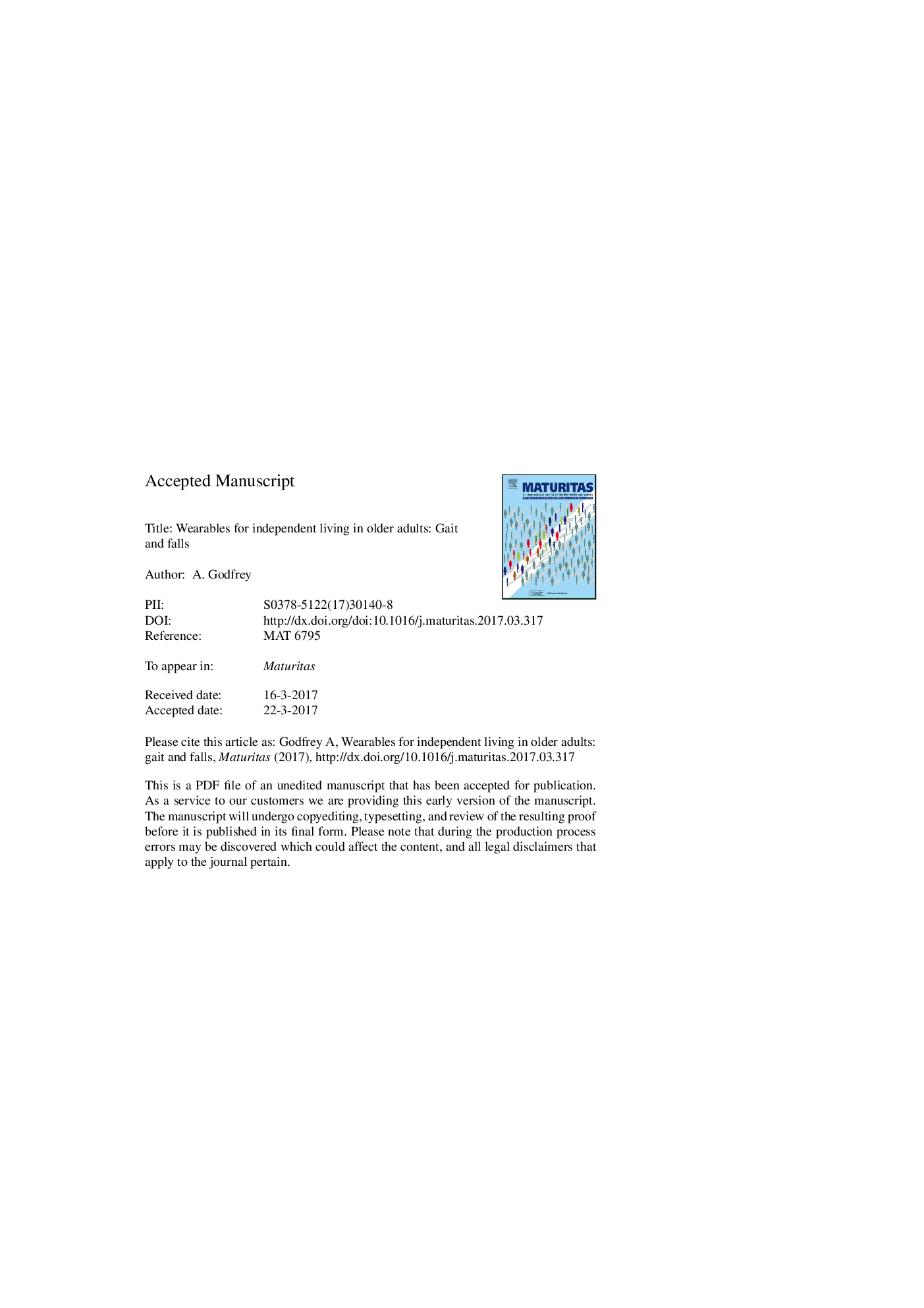| Article ID | Journal | Published Year | Pages | File Type |
|---|---|---|---|---|
| 5503346 | Maturitas | 2017 | 30 Pages |
Abstract
Solutions are needed to satisfy care demands of older adults to live independently. Wearable technology (wearables) is one approach that offers a viable means for ubiquitous, sustainable and scalable monitoring of the health of older adults in habitual free-living environments. Gait has been presented as a relevant (bio)marker in ageing and pathological studies, with objective assessment achievable by inertial-based wearables. Commercial wearables have struggled to provide accurate analytics and have been limited by non-clinically oriented gait outcomes. Moreover, some research-grade wearables also fail to provide transparent functionality due to limitations in proprietary software. Innovation within this field is often sporadic, with large heterogeneity of wearable types and algorithms for gait outcomes leading to a lack of pragmatic use. This review provides a summary of the recent literature on gait assessment through the use of wearables, focusing on the need for an algorithm fusion approach to measurement, culminating in the ability to better detect and classify falls. A brief presentation of wearables in one pathological group is presented, identifying appropriate work for researchers in other cohorts to utilise. Suggestions for how this domain needs to progress are also summarised.
Related Topics
Life Sciences
Biochemistry, Genetics and Molecular Biology
Ageing
Authors
A. Godfrey,
